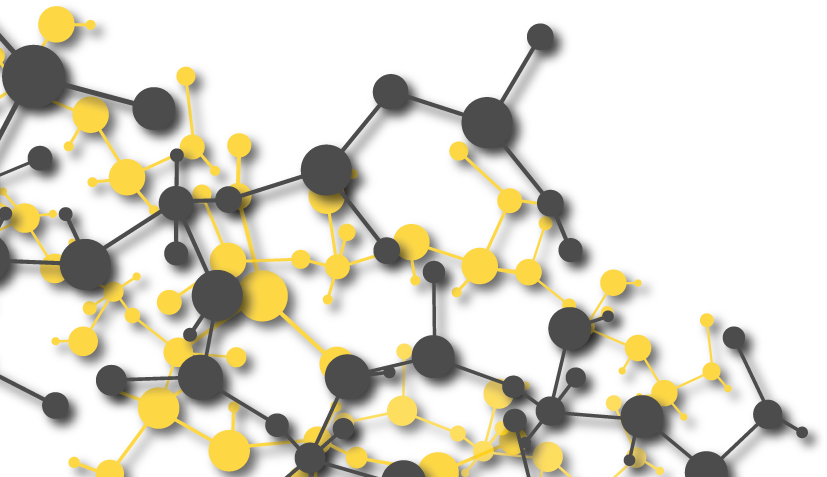Gantrade offers 2-Methyl 1, 3- Propanediol (MPO), also known as methyl propanediol, to enhance unsaturated polyester resins, including both composites and gelcoats, as well as saturated polyester for coating, polyurethane, polycarbonate, and much more.
Let’s take a look at the many applications of this versatile diol:
1. Unsaturated Polyester Resins (Composites)
The unique molecular structure of MPO brings significant process and property advantages to unsaturated polyester resins (UPR). The all-primary hydroxyl and high boiling point character of MPO increase both esterification rates and kettle productivity.
This higher reactivity compared with other glycols, such as propylene glycol, leads to lighter colored resins. In addition, the non-linear backbone of MPO gives polyesters excellent styrene miscibility. MPO provides an excellent balance of tensile strength, elongation, and flexibility to the final product.
Molding resins can achieve higher elongations and toughness without sacrificing modulus. Moreover, unlike other flexibilizing glycols, MPO will not lead to losses in chemical resistance, water resistance, or weatherability. Isocyanate-modified, unsaturated polyester resin molding systems benefit from incorporating MPO into the polyester. The two primary hydroxys of MPO ensure reliable, rapid Isocyanate chain extension in these hybrid resin systems.
2. Unsaturated Polyester Resins (Gelcoats)
With their exacting performance requirements, gelcoats gain key benefits from the inherent properties of MPO. Gelcoats formulated with MPO based polyesters have high strength and elongation characteristics, excellent blister resistance, and excellent weatherability. Comprehensive testing has demonstrated that MPO enhances the toughness of gelcoats without sacrificing extended weatherability performance. MPO-based polyester used in these applications are suitable for use in marine and fibreglass panel resins.
3. Saturated Polyester for Coating
MPO’s unique capability to flexibilize high aromatic content phthalic, isophthalic, or terephthalic-based polyesters enables O-T flexibility coupled with H-2H pencil hardness. This coupling of hardness and flexibility is only possible because the MPO-based polyesters have a very low tendency to form crystalline, insoluble polyesters even when there is a high aromatic content. Extensive testing of MPO-based polyesters has demonstrated that manufacturers can use MPO to make highly weatherable polyester binders that can compete effectively with top-of-the-range exterior durable polyesters.
4. Polyurethane
MPO is a building block that manufacturers broadly utilize in the diverse field of polyurethane coating, adhesives, sealants, and elastomers. Application systems include: 2K industrial maintenance coatings, aqueous polyurethane dispersions, liquid prepolymers for urethane elastomers, and urethane adhesives.
As a liquid diol, manufacturers use MPO as a chain extender to build molecular weight and performance in urethane elastomers, adhesives and sealants. The branched structure of MPO lends itself especially well to the manufacturing of clear, pliable sealants and adhesives. In addition, MPO has excellent compatibility with conventional polyols and dependable reactivity with the isocyanate component.
MPO is an ideal intermediate for polyester polyols because it yields all primary hydroxyl-containing polyesters. Its unique structure makes it possible to produce liquid polyesters that are readily dissolved in conventional coatings solvents. MPO-based polyester polyols also demonstrate excellent compatibility in urethane adhesive formulations.
5. Plasticizers
The unique non-crystallizing nature of MPO based diesters and polyesters can be a significant handling advantage for the thermoplastics (PVC) compounder. The very low glass transition temperatures of MPO-based ester and polyester derivatives ensure efficient utilization of these premium polyesters. End uses for MPO based plasticizers include PVC laminating films, refrigerator gaskets, and vinyl electric insulation found in wire cable, tape, and more.
6. MPO Alkoxylates
MPO reacts with ethylene oxide or propylene oxide to from MPO alkoxylates. The main applications for MPO alkoxylates are the manufacture of monomers for UV curing agents, polyester polyols, paints, inks, adhesives, and polyurethanes.
7. MPO Diacrylate / Dimethacrylate and MPO Alkoxylate Diacrylate / Dimethacrylate
MPO or MPO alkoxylate reacts with acrylic acid / methacrylic acid to form MPO diacrylate / dimethacrylate or alkoxylate diacrylate / dimethacrylate. Manufacturers use both glycol diacrylates in quite broad applications as starting materials and intermediates for thermosetting paints, adhesives, nonwoven fabric binders, photosensitive agents, paper finishing agents, copolymer modifiers, and cross-linking agents. MPO alkoxylate diacrylate / dimethacrylate / have lower skin irritation and odor than MPO diacrylate / dimethacrylate.
8. MPO Polycarbonate
MPO reacts with DMC or DEC to form MPO polycarbonate. MPO is a branched aliphatic diol with two primary hydroxyls that inhibit the crystallization of MPO polycarbonate, allowing it to remain liquid--even in cold temperature. The main applications for MPO polycarbonate are as the soft segment intermediates for polyurethanes, coating, and ink.
9. Modified Polyethylene Terephthalate (PET)
MPO provides an effective crystallization modifier for modified polyethylene terephthalate (PET). The branched structure of MPO helps control both thermal and crystallization properties of the final polyester products. This control offers differential performance features in polyester bottle and fiber resin applications. PET is essentially a highly crystalline resin and, therefore, appears opaque. It is known to use a small quantity of isophthalic acid, together with terephthalic acid as the dicarboxylic acid component of PET, or to use MPO together with ethylene glycol, as the glycol component of PET can obtain transparent bottles. As isophthalic acid is very expensive, MPO-modified PET can reduce PET bottle cost. MPO has a side chain of a methyl group which renders the polyester an asymmetric chemical structure; if manufacturers use this compound as PET fiber, the resulting PET fiber will be made in irregular form, and dyestuff molecules will attach to it readily. Therefore, the resulting PET fibers are endowed with excellent dyeability, lesser elongation, and greater strength.
10. Personal Care & Detergents
Manufacturers also use MPO as an emollient, emulsifier, and humectant. The hydrophilic / lipophilic balance of MPO provides solvency to both polar and non-polar active components. This feature ensures shelf-stable formulations and clear, homogenous solutions. MPO can also be used effectively to replace other glycols such as Mono or Dipropylene Glycol as the carrier solvent in liquid laundry detergents.
11. Inks
MPO can be used to replace other diols as the plasticizer in liquid ink formulations. MPO imparts increased flexibility in screen inks and inkjet formulations and reduces the level of cracking.
Gantrade maintains stock of MPO ready to ship for a variety of applications. For more information on MPO and how it can enhance your products, contact us today to get started.
















